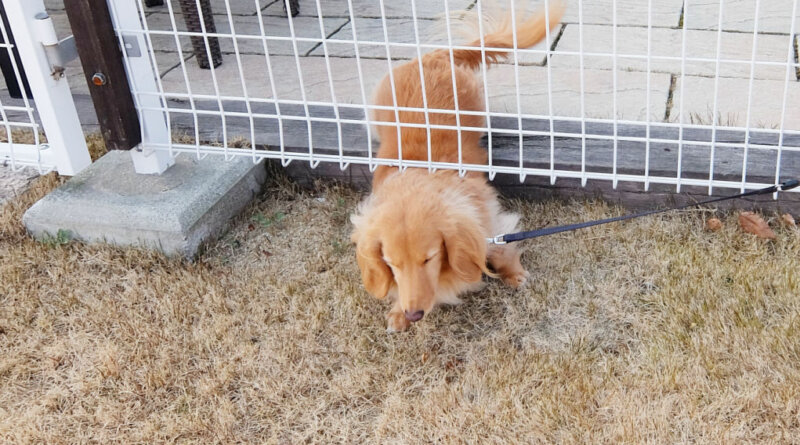Dog Escape Artist Behavior and Prevention
One of the problems a fur parent may have is dealing with dog escaping habits.
As responsible dog owners, we do everything to keep them healthy, happy, and by our side.
However, our pooch can turn into a hairy Houdini and pull off an escape act. Just the thought of our dog escaping can be terrifying.
So, if we do everything for our pets, why do they still try to get loose? How do we handle an escape artist dog?
As a fur parent, it is crucial to understand the root cause of this behavior and figure out how to prevent their habit of escaping.
You’d be surprised that no matter how much of a homebody our dog seems, he will try to escape because of certain factors.
Luckily, there are various ways to calm our pet’s inner Houdini.
We are responsible for keeping them safe at home and preventing the possibility of our dogs getting hurt, fatally injured, or lost forever.
In this post, we rounded up several helpful solutions for your dog escaping problems.
Dog Escaping Behaviour: Every Fur Parent’s Frustration
Our dogs are not just our pets—they are a valuable part of our family.
No one can ever dispute the strong bond we have developed with our dogs, and numerous studies have supported that attachment.
No matter how much our dog loves to be with us, they are curious creatures who sometimes try to bolt from home and explore.
While some develop a habit of escaping, others respond to certain triggers.
One minute they are there, and the next thing you know, they are gone.
It is not only upsetting and stressful for us, but there is also an added worry that our fur babies are out there scared and hurt.
Repeated attempts to prevent our dog from escaping may be frustrating. Each time our pet bolts away, the possibility of tragic consequences increases.
Running loose can put our pup at risk of being hit by a passing vehicle, injured in a dog fight, or hurt in different ways.
Also, it will put us liable for any potential damage or injury caused by our dog.
We may also be required to pay a fine when an animal control agency picks up our lost dog.
We understand how frustrating and scary this experience can be for fur parents. Our suggestion?
Pause, take a few deep breaths, and try to relax your nerves. You might want to read through this article.
Let us explore the triggering factors, how to deal with the problem, and what we can do to keep them safe and secure.
Related: 25 Escape Artist Dog Breeds That Are Good at Running Away
Why Does My Dog Keep Escaping
Here are several reasons to help you understand their escaping behavior.
Boredom
Most dogs tend to escape from the comforts of your home (or yard) because of boredom.
Leaving them too long with nothing to do can provoke them to get out and explore the neighborhood.
Lack of Social Interaction
Dogs are naturally social animals who love interacting with other canines and can become lonely or frustrated when left alone for a long time.
Without appropriate outlets to stimulate their physical and mental needs, unwanted behaviors, such as escaping, can occur.
Here are some helpful ideas to boost your dog’s quality of life and social interaction:
- Take your dog outside for a walk several times a day, play a game of fetch, or hit the dog park.
- Enrolling your dog in a training class to learn new skills might even be a fun idea.
- Provide your dogs with interesting toys while you are away.
- If Fido gets along well with other dogs, take him to a doggie daycare for a playgroup.
Related: 8 Scientific Reasons to Socialize a Dog
Mating Instinct
Intact males often explore the neighborhood to look for love. A female in heat emits a scent that can trigger males to escape and meet her.
The same goes for females in heat who are looking for a suitor.
Separation Anxiety
Anxiety in dogs causes them to exhibit unwanted behaviors, especially when alone.
In an attempt to escape, your dog can potentially get injured or cause damage to your home.
Hunt Instinct
Huskies and other prey-driven breeds are more likely to chase down small fluffy animals.
Leaving this habit unattended encourages them to hunt down these critters.
Fear
Dogs have a powerful sense of hearing. Hearing loud noises, such as thunder and fireworks, can terrify them, causing them to run away to escape from the noise.
Do Dogs Come Back After Escaping?
While many of us dread losing our dogs after escaping, there is a good chance of them returning home soon after wandering.
It’s all thanks to their hypersensitive sense of smell which helps them navigate back to their beloved homes or owners.
Our dogs do not simply run off just because they want to. An overwhelming urge might have piqued their attention, which got the better of them.
Most dogs will likely return home as long as they do not run off to unfamiliar places or get caught in an accident.
However, never make the mistake of getting angry when your dog returns home.
This can only make your doggo feel anxious and afraid to go come home after wandering around the neighborhood.
Instead of scolding your dog, practice obedience training to teach them that they are the subordinates and you are the pack leader.
Reward them with positive verbal cues, delicious dog treats, and games when they do a good job.
If ever they break loose, the thought of having a great home that is full of love and treats will make them want to run back to you again.
Related: Statistic of Pets Returning Home After They Go Missing
Dog Escape Artist: What to Do When Your Dog Actually Escapes
A Houdini dog will slip out the front door, break through its leash, or dig under your fence.
Whenever this happens, it’s best to stay calm and collected when your furry friend gets loose.
However, you should never punish your dog for escaping. Due to association, punishing them will not resolve the problem but will only instill fear, making them less likely to return home.
Additionally, never get angry if they escape due to fear or separation anxiety. This will only make matters worse.
Here are some tips to keep in mind to increase the chances of their safe return:
Do Not Panic and Start Searching
Panicking will only prevent you from thinking clearly. Taking a few minutes to breathe and collect yourself helps clear your mind. When you are ready, start searching your immediate area.
Your dog can roam around the neighborhood, visit other pets nearby, or casually sniff your neighbor’s trees.
Knock on your neighbor’s doors and inform them about your missing dog. Be sure to bring a photo of your pet for reference.
Here are some tips on where to start searching:
Search Smart
Think strategically. We know our pets better than others. When dogs go missing, they often end up wandering in familiar places.
Check out nearby parks where your dog loves to play. If they have a canine friend a few streets away from your home, visit them.
Other good places to search are local restaurants or the back alley where they keep their trash.
Visit Nearby Shelters
If dogs go missing for a few days, they might be picked up by animal control officers and sent to a local shelter.
Take some time to visit nearby shelters and ask to see their recent intakes.
If your dog is not there, leave a photo of your pup and your name and contact number before leaving.
Organize a Search Party
Searching for a missing dog alone can be overwhelming.
Do not hesitate to seek help from your family, friends, or neighbors and form a search party.
Provide them with a recent photo of your pup and spread it out. Inform area guards and the nearby neighborhood about your lost dog and leave them with your contact information.
Post on Social Media
Social media is a powerful platform that has helped countless people reunite with their pets.
Take advantage of the power of social media by posting your missing dog on your page.
Social media users will share your post on their page, increasing your chances of finding your dog. Also, check out Facebook pages dedicated to finding lost animals.
Put Out Signs
There is still no substitute for an old-fashioned “missing or lost dog” poster.
Put out signs with your dog’s most recent photo, contact details, information about where your pet was last seen, and a potential reward.
Place your lost dog posters on nearby poles, shops, shelters, restaurants, and vet locations.
Invest in a GPS Tracking Collar and Microchip Implant
If you have a serial Houdini pooch, consider using a GPS tracking collar on your dog to track them down easily should it get loose.
Also, the microchip implant will provide animal control officers with all contact details.
Related: How GPS Trackers for Dogs Work
How To Stop A Dog From Escaping
If your dog is a master of escape, we have some helpful solutions to prevent them from escaping and eventually eliminate this habit.
Keep Your Pet Engaged
If your dog escapes due to boredom, there are various ways to entertain him.
You can give your pet more engaging toys, take him outside for long walks, or teach him new tricks.
Walk Your Dog Daily
Confining your dog all day inside the house makes him bored, which is why he would seek fun elsewhere.
Taking Fido for a daily walk can be a good solution, as it helps stimulate his body and mind.
Consider hiring a professional dog walker if you are short on time. You may have friends who want to walk your dog around the neighborhood.
Create an Exercise Plan
A tired dog is a happy dog. Like humans, your dog also needs daily exercise.
Since every breed has unique exercise requirements, take time to research or, better yet, talk to a vet to develop a healthy balance of exercise and rest for your pet.
After engaging in physical activity, a happy yet exhausted dog will likely curl up and doze off instead of planning another unchaperoned adventure through the neighborhood.
Train Your Dog
Teaching your dog simple obedience commands, such as sit, stay, and come, can be a lifesaver, especially when taking them outside for a walk.
When seeing a squirrel, dogs will quickly chase them without warning.
However, when your pup understands basic commands, it can make a significant difference between a calm walk and a crazy chase scene.
Here are other excellent benefits of training your pup:
- Strengthens bond
- Keeps your dog busy
- Helps you understand your dog even more
- Makes your dog well-mannered
Desex Your Dog
Neutered male dogs are less likely to escape in search of females. The same goes for spayed females.
Additionally, spayed and neutered dogs live longer and healthier lives and eliminate the problem of unwanted litters.
Provide Them With a Safe Place in the Yard
Installing a kennel or dog house in the yard can make your pet feel safe and secure.
Having a comfy place to stay and retreat helps stop your dog from escaping.
Window Portholes
Hearing or smelling something without seeing it can stress out your dogs.
If you belong in a neighborhood with plenty of foot traffic or activities, create window portholes to pacify curiosity by allowing your dog to see what is happening on the other side of the fence.
Send Your Dog to a Doggy Daycare Center
Doggie daycare centers have become increasingly popular among busy fur parents.
It is a good place where your dog can socialize, have fun, and get some exercise while you are away from home.
Check out the nearest doggy daycare center to ensure it is safe and secure, as dogs occasionally escape from daycare centers.
Fencing Ideas for Dog Escape Prevention
Dogs are intelligent creatures—they will find various ways to escape from your yard, even if you have a fence!
Large dogs can easily jump fences. In most cases, Fido will use parts of your fence to climb over them.
While others dig under or chew through the fence, some dogs can open a gate or even use a combination of these methods to find their way out.
Until you uncover why your dog keeps escaping, consider these escape-proof dog fence ideas.
For Jumpers and Diggers:
Extend Your Fence
One of the most effective dog jumping fence solutions is adding a lean-in or L-footer section to the top of your existing fence.
To make a lean-in fence, you will need some farm wires and attach them to the top to create an awning on the facing inside.
This will prevent your dog from climbing the fence.
On the other hand, the L-footer runs horizontally from the top, creating a canopy-type deterrent fence for dogs that love to escape.
These are probably two of the many effective ways to keep your dog from jumping the fence.
Get Rid of Climbing Aids
Walk around your backyard. Inspect and remove any climbing aids, such as garbage cans, benches, wood piles, boulders, and chairs, that your dog can use to escape.
Install Coyote Rollers
These can be one of the best fence options for dogs that escape.
Attaching these long metal bars to the fence can prevent dogs from getting a foothold to climb over.
It turns like a rolling pin to stop your dog from getting away. While these rollers are designed to keep coyotes from entering your property, it works equally effectively for keeping your pet in.
Add Landscaping
This is perhaps the simplest and most effective way to prevent your dog from escaping.
Planting a hedge along the inside of the fence line not only makes your yard look great but also makes it more difficult for your dog to jump over the fence.
For Diggers:
Attach an L-Footer Along the Base of the Fence
To create an L-footer, attach a chicken wire or a piece of chain link to the bottom of the fence.
While some pet owners add an L-footer to the top of the fence, others bury them for aesthetic reasons.
Others simply lay it on the top of the ground and secure it with rocks, mulch, gravel, or even planters.
Pour a Concrete Footer
After pouring concrete along the fence perimeter, the bottom of the fence should be buried into the mixture.
This type of escape-proof dog fence can stop even the most determined digger.
Related: Best Non-Harmful Alternatives to Electric Dog Fences
Our Dog Escaping Behaviour: Final Thoughts
Your dog escaping behavior may be caused by several factors.
The good news is there are plenty of ways you can correct their behavior and prevent them from breaking loose again.
With lots of love, patience, and training, you will be surprised how your fur baby will transform from an escape dog artist to an obedient Floof.
Do you have more tips on how to stop a dog from escaping? Share your thoughts with us in the comment section below!
READ NEXT: 25 Most Common Dog Behavior Issues: Habits and Problems That Are Not Normal











